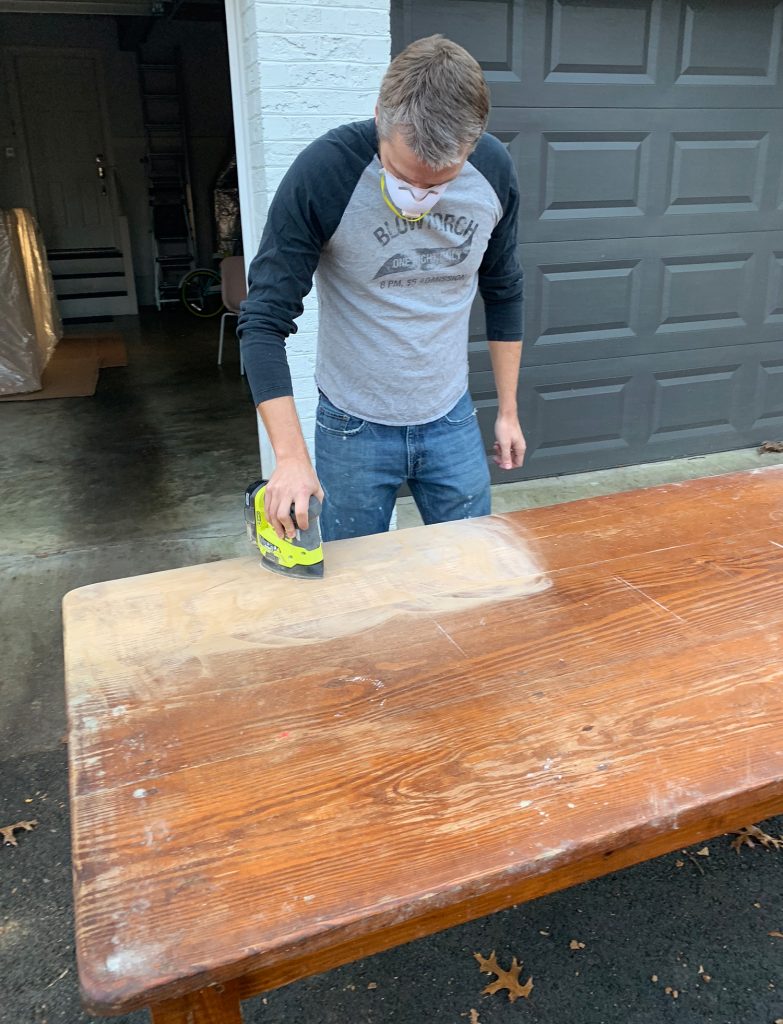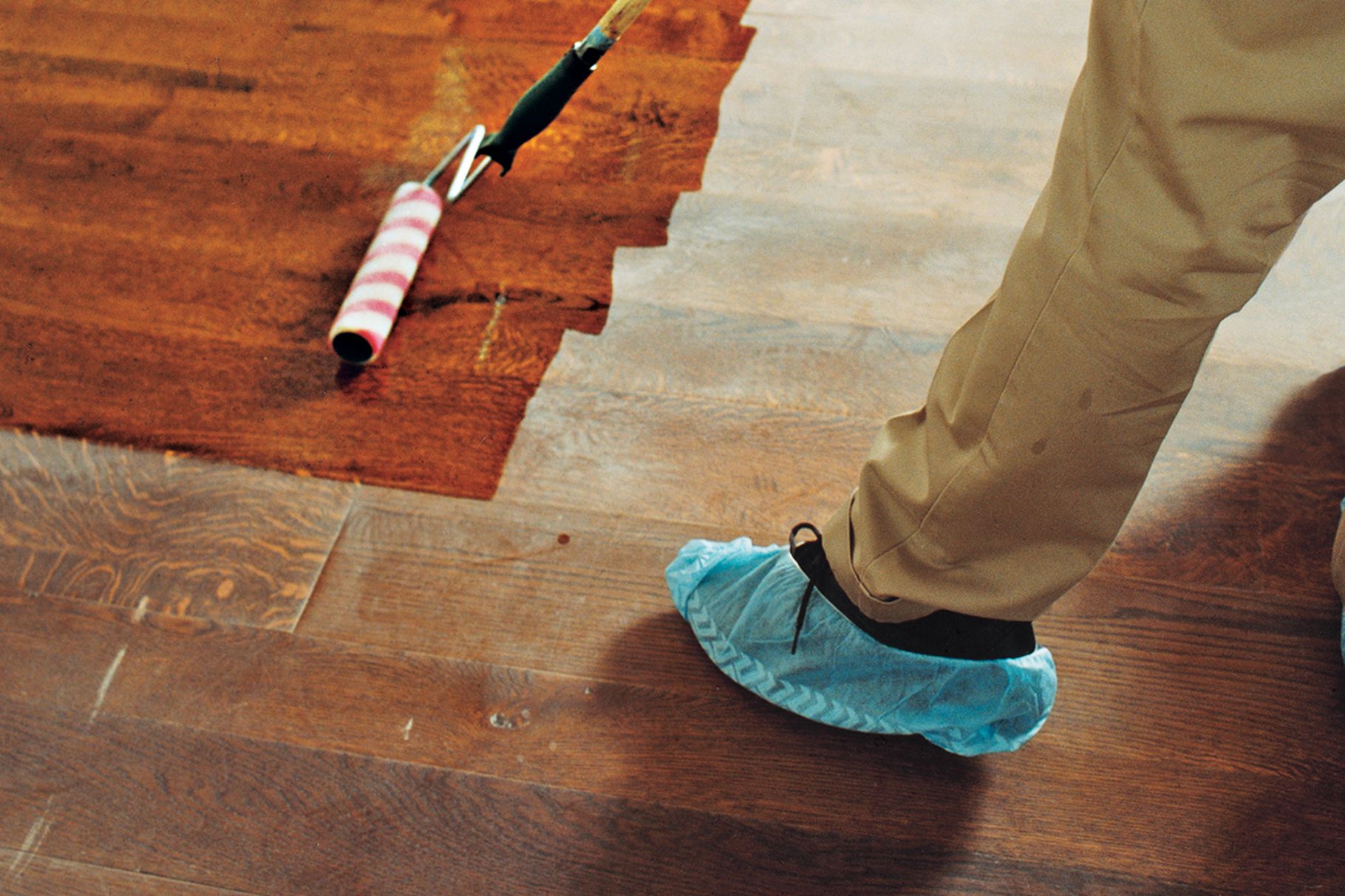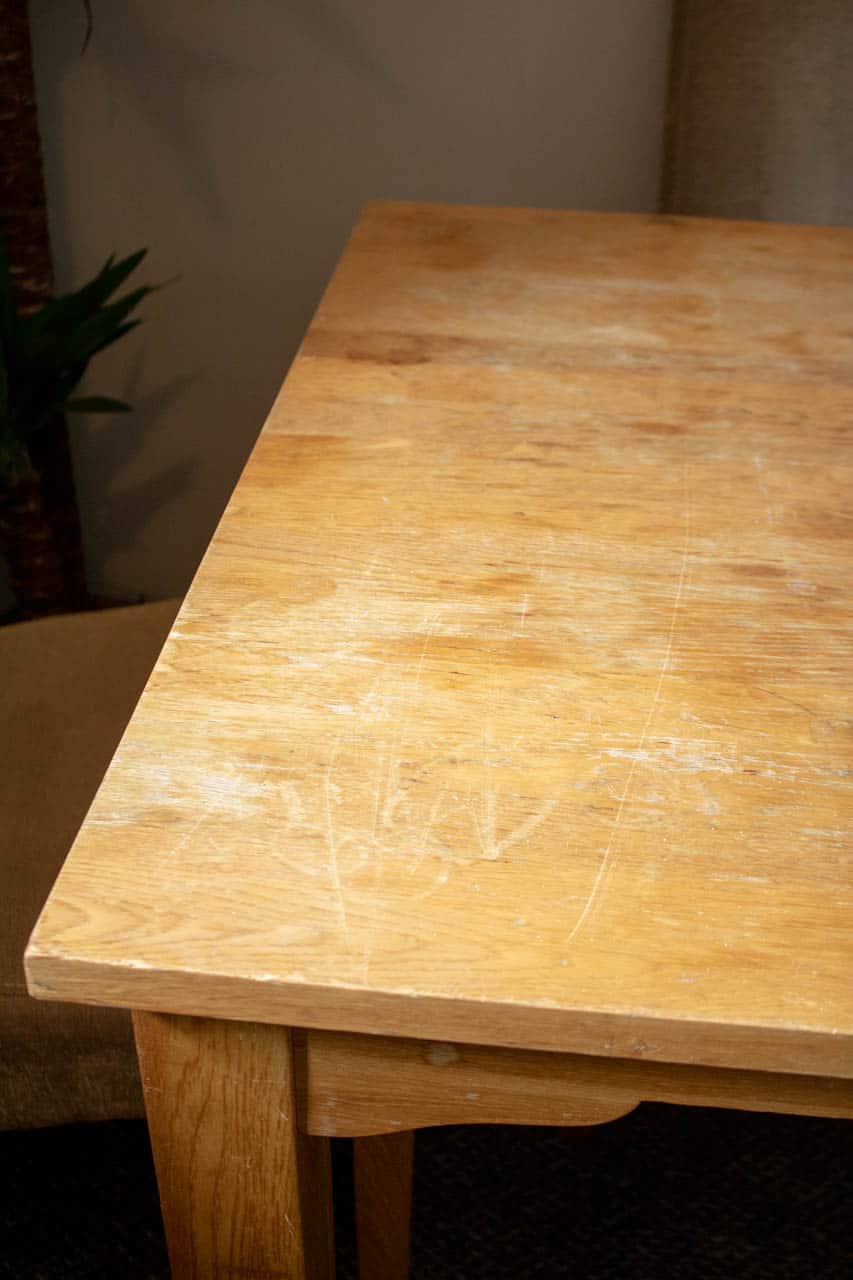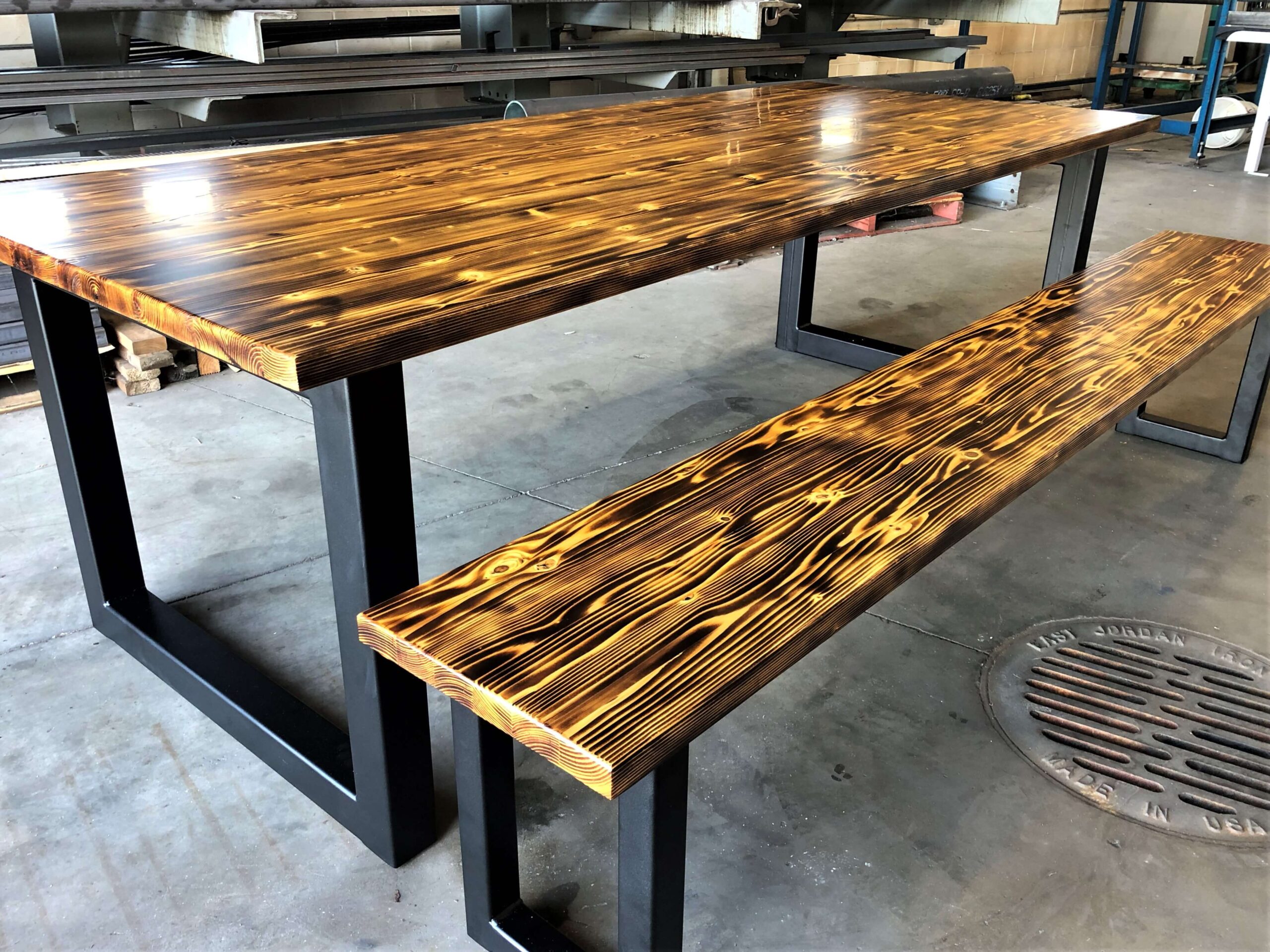If your wood kitchen table is looking worn and scratched, it may be time to give it a fresh new look. One of the best ways to restore a wood kitchen table is by sanding and refinishing it. This process involves removing the old finish, sanding down the surface, and applying a new coat of finish. To start, use a coarse-grit sandpaper to remove the old finish. This will help to remove any scratches, dents, or stains on the surface of the table. Make sure to sand in the direction of the grain to avoid damaging the wood. Once the old finish is removed, switch to a fine-grit sandpaper to smooth out the surface. After sanding, clean off any dust and debris from the table with a damp cloth. Then, apply a new coat of finish using a brush or cloth. You can choose from a variety of finishes such as polyurethane, varnish, or tung oil depending on the look you want for your table. Allow the finish to dry completely before using your newly restored wood kitchen table.1. Sanding and Refinishing Your Wood Kitchen Table
There's something special about a vintage wood kitchen table. It adds character and charm to any kitchen. However, over time, these tables can lose their luster and may need some restoration to bring back their original beauty. Start by cleaning the table with a gentle cleaner to remove any dirt and grime. Then, assess the condition of the table. If there are any scratches, use a walnut to rub over them. The natural oils in the walnut will help to fill in the scratches and make them less noticeable. If there are any stains on the table, try sanding them out with a fine-grit sandpaper. If that doesn't work, you may need to bleach the area to remove the stain. Once the table is clean and free of scratches and stains, apply a coat of beeswax or linseed oil to add shine and protect the wood.2. Restoring a Vintage Wood Kitchen Table
Scratches on a wood kitchen table can be unsightly, but fortunately, they can be easily restored. Before you start, make sure to clean the table to remove any dirt or debris. Then, use a fine-grit sandpaper to sand down the scratches. Make sure to sand in the direction of the grain to avoid damaging the wood further. After sanding, apply a wood filler to any deep scratches. This will help to fill in the gaps and make the surface smooth. Once the filler is dry, sand it down until it is flush with the surface of the table. Then, apply a coat of stain or paint to match the color of the table. Finally, finish with a coat of polyurethane or varnish to protect the surface.3. How to Restore a Scratched Wood Kitchen Table
Water can cause damage to wood, leaving unsightly stains and discoloration. If your wood kitchen table has been affected by water damage, there are a few steps you can take to restore it. First, use a cloth to blot up as much water as possible. Then, use a hairdryer on a low setting to dry the surface. Once the table is dry, assess the damage. If there are any white marks, use a cloth dampened with a mixture of olive oil and vinegar to rub over the marks and buff them out. If the damage is more severe, you may need to sand the surface and apply a new coat of stain or paint. Finish with a coat of polyurethane or varnish to protect the wood from future water damage.4. Restoring a Water-Damaged Wood Kitchen Table
Stains on a wood kitchen table can be stubborn and difficult to remove. But with a few simple steps, you can restore your table to its original beauty. Start by sanding the stained area with a fine-grit sandpaper. This will help to remove the top layer of the wood where the stain has penetrated. If the stain is still visible, use a wood bleach to lighten the wood. Follow the instructions on the bleach carefully, as it can be damaging if used incorrectly. After bleaching, sand the area again to remove any remaining stain. Then, apply a coat of stain or paint to match the color of the table. Finish with a coat of polyurethane or varnish to protect the surface.5. Restoring a Stained Wood Kitchen Table
Over time, exposure to sunlight and other elements can cause wood to fade. If your wood kitchen table has lost its color, there are a few steps you can take to restore it. Start by sanding the table with a fine-grit sandpaper to remove the top layer of wood. Then, apply a coat of wood stain to darken the wood and bring back its color. Follow with a coat of polyurethane or varnish to protect the wood from future fading.6. Restoring a Faded Wood Kitchen Table
Warped wood is a common issue with kitchen tables, especially in humid environments. If your wood kitchen table is warped, there are a few steps you can take to restore it. First, try placing a damp cloth on the warped area and using a clothes iron on a low setting to steam the wood. This can help to loosen the fibers and straighten out the warp. If this doesn't work, you may need to sand down the warped area and refinish the table.7. Restoring a Warped Wood Kitchen Table
If your wood kitchen table has been painted and is looking worn or chipped, it may be time for a touch-up. Start by sanding the table to remove any chipped or peeling paint. Then, apply a fresh coat of primer and paint to match the color of the table. Finish with a coat of polyurethane or varnish to protect the surface.8. Restoring a Painted Wood Kitchen Table
Accidents happen, and if your wood kitchen table has been burned, there are a few steps you can take to restore it. Start by sanding the burned area with a fine-grit sandpaper. If the burn is deep, you may need to use a wood filler to fill in the gap. Sand the filler down until it is flush with the surface of the table. Next, touch up the color of the table with stain or paint. Finish with a coat of polyurethane or varnish to protect the wood.9. Restoring a Burned Wood Kitchen Table
Cracks in wood can be unsightly and may also compromise the strength and stability of a table. If your wood kitchen table has cracks, there are a few steps you can take to restore it. Start by cleaning the table to remove any dirt or debris. Then, use a wood glue to fill in the cracks and hold the wood together. Once the glue is dry, sand down the surface until it is smooth. Then, apply a coat of stain or paint to match the color of the table. Finish with a coat of polyurethane or varnish to protect the wood.10. Restoring a Cracked Wood Kitchen Table
Why Restoring Your Wood Kitchen Table is a Wise Design Decision
-(1).jpg?0.33023809487393097)
When it comes to designing your home, every detail matters. The furniture you choose not only adds to the aesthetic appeal of your space but also plays a crucial role in functionality and comfort. The kitchen, being the heart of the home, is no exception. A wood kitchen table is a classic and versatile piece that can elevate the look and feel of your kitchen. However, over time, daily wear and tear can take a toll on its appearance and functionality. This is where restoring your wood kitchen table comes in, providing a cost-effective and eco-friendly solution that will bring new life to your kitchen.
The Benefits of Restoring Your Wood Kitchen Table

Before you rush to replace your worn-out wood kitchen table , consider the benefits of restoration . First and foremost, it is a more environmentally friendly option. By restoring your table, you are preventing it from ending up in a landfill and contributing to waste. Additionally, restoration is a more budget-friendly choice compared to purchasing a brand new table. You can save money by giving your existing table a makeover rather than buying a new one. Moreover, restoration allows you to maintain the unique character and charm of your wood kitchen table , which may have sentimental value or complement the style of your home.
The Process of Restoring Your Wood Kitchen Table
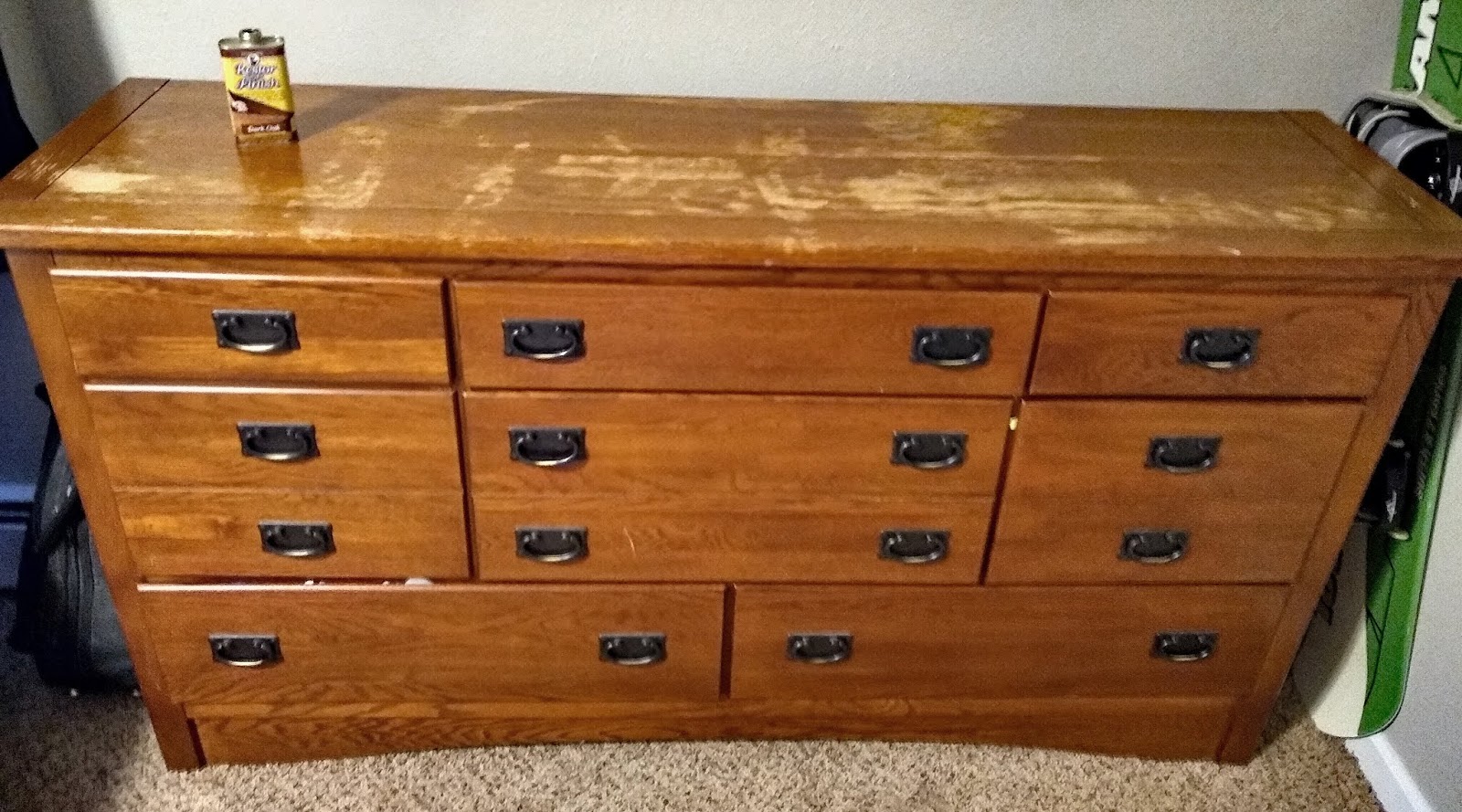
The restoration process involves several steps to ensure your wood kitchen table looks as good as new. First, the table is cleaned and sanded to remove any dirt, stains, or scratches. Next, any necessary repairs, such as filling in cracks or replacing damaged parts, are done. Then, the table is stained or painted to your desired color and finish. Lastly, a protective sealant is applied to preserve the wood and enhance its durability. By following this process, you can revive your kitchen table and extend its lifespan, making it a worthwhile investment.
Conclusion

A wood kitchen table is not just a piece of furniture; it is a gathering place for family and friends to share meals, stories, and memories. By restoring your wood kitchen table , you are not only preserving its beauty and functionality but also creating a more sustainable and budget-friendly home. So, before you consider replacing your kitchen table, give restoration a chance and see the amazing transformation for yourself!
